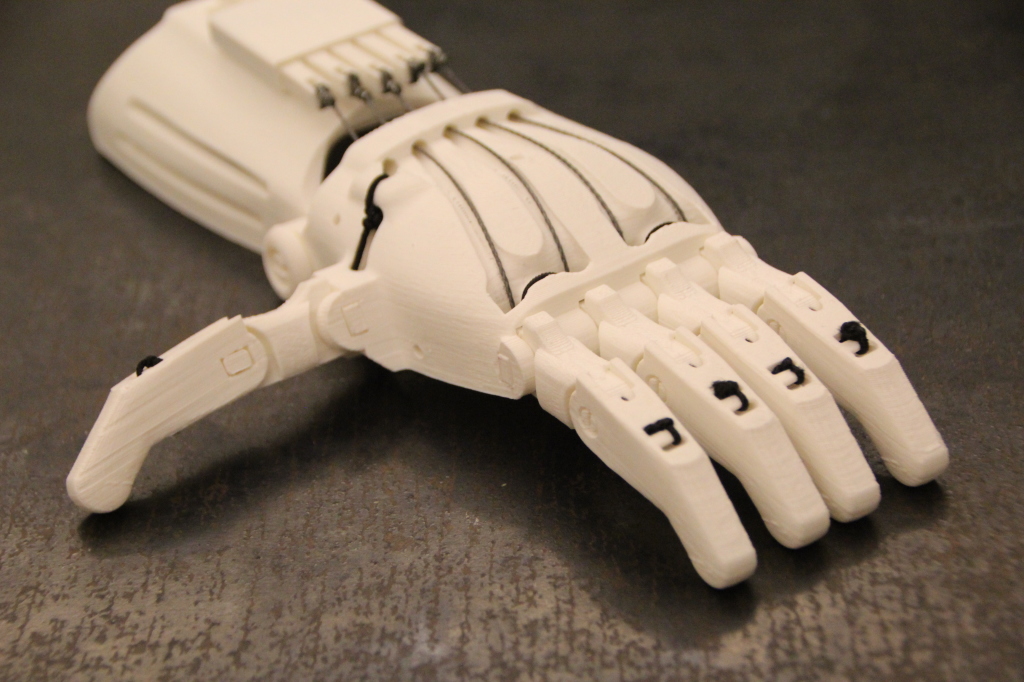A Helping Prosthetic Hand

Latest News
December 29, 2014
We’ve written about the ways 3D printing is helping improve the design and production of prosthetics before. The technology is important, but efforts in the 3D printing and maker community to develop lower-cost prostheses for those in need are even more innovative.
There are now several organizations applying 3D scanning and printing to help make it easier to provide artificial limbs in developing countries and for needy families and children.

UK-based Open Bionics is able to create robotic hands for roughly $1,800, at least based on the prototypes the company has developed. The company creates a 3D scan of the recipient’s limbs using a tablet computer, and then constructs the robotic prosthetic using a 3D printer.
At the University of Toronto, the Faculty of Information’s Critical Making Lab is also testing ways to create lower cost prostheses with 3D printing. Led by professor Matt Ratto, the group is developing a low-cost process for scanning, modeling, fabricating and assembling lower-leg prosthetics for use in developing countries. The solution will be tested at the Comprehensive Rehabilitation Services for Uganda (CoRSU) hospital next year.
A software wizard will guide hospital staff through the scanning and modeling processes. A physician will be trained to customize the prosthetics using MeshMixer software from Autodesk. That puts the power of making the limbs in the hands of the hospital staff. The team hopes to be able to expand the training to other locations once they are established at the Ugandan facility.
Project Daniel, a crowd-sourcing initiative launched by California-based Not Impossible in 2013, is printing hands and arms for amputees in South Sudan and the Nuba Mountains. That group set up a training camp and taught local healthcare workers to print and assemble the prosthetics.
Then there’s e-NABLE, a network of makers, healthcare professionals, philanthropists, and other volunteers (around 3,000 of them) that is fabricating 3D-printed hand prosthetics.
The e-NABLE Community was launched by R.I.T.‘s Jon Schull, and now provides downloadable plans for 3D printed mechanical prosthetics that just about anyone can assemble. Their Raptor hand was modeled in Fusion 360.
Source: Fast Company
Subscribe to our FREE magazine, FREE email newsletters or both!
Latest News
About the Author
Brian Albright is the editorial director of Digital Engineering. Contact him at [email protected].
Follow DE





